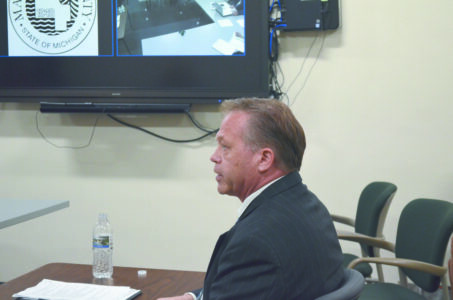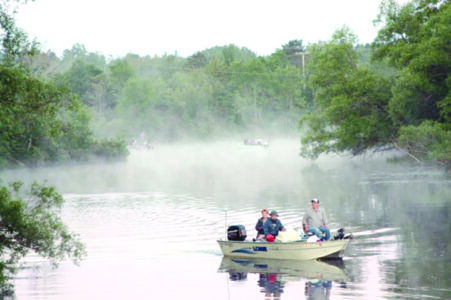Study: Lower Harbor ore dock in good condition
MARQUETTE – After being closed more than 40 years ago, Marquette’s Lower Harbor ore dock could be up and running with little effort, according to engineers with GEI Consultants in Marquette.
GEI conducted an above- and below-water structural assessment of the ore dock in June and reported to the Marquette City Commission last week that the structure was in good shape overall.
“I was pretty impressed,” said Michael Carpenter, senior project manager with GEI. “That structure, like, if someone wanted to use it again, start it up, they could do it without much effort. Get those motors going, those hoists would be operable in a few days; it wouldn’t take much at all.”
According to the city’s website, the dock was constructed from 1931-32 for the Duluth, South Shore & Atlantic Railroad at a cost of $1.32 million.
Nearly 24 million tons of ore left Marquette through the Lower Harbor between the dock’s first day of service, June 3, 1932, and its closure in 1971.
The 970-foot dock is about 66 feet wide, constructed mostly of steel and concrete and towers about 86 feet above the water.
The dock’s eight distinct sections are supported by a steel-reinforced concrete base and about 7,600 10- to 16-inch-wide timber piles that were driven into bedrock beneath Lake Superior’s surface.
While in operation, iron was transported via rail to the top of the dock, dumped into the structure’s storage bins and emptied through chutes into vessels waiting below.
Carpenter said consultants compared the current structure to original design drawings and checked for any inconsistencies and deterioration beyond normal aging. However, a more in-depth assessment would need to be conducted in the event future developers are considering modifying the structure with additional weight loads.
GEI estimated a cost of about $800,000 to address concerns found during the assessment, though the company admitted a contractor may be able to provide more accurate estimates.
Consultants said the most noticeable deterioration was of the timber fender system along the outside of the dock, in which vegetation has begun to grow, and the structure’s concrete surface, which can allow moisture to corrode exposed steel reinforcement.
There was also minor deterioration to the perimeter piles and loose chunks of concrete and wood decking that were deemed falling safety hazards.
GEI presented the city with three options it could take. The city could do nothing and keep the dock closed to the public and develop a safety plan for limited access to prevent injuries.
Opening the dock to public access was another option, but that would require additional safety upgrades.
“I think the main concern is falling hazards from concrete on the superstructure (and) debris that’s up overhead,” said George Meister, with GEI Consultants. “Some of that’s in degraded condition and if that was cleaned off and some of the vegetation cleared up around the outside of the ore dock, I think (public access) would be possible …”
Improving the walkway from the shore to the dock, installing railings and lighting and any repairs to damaged concrete should also be considered.
The public option would not violate a bottomlands agreement between the city and the state that limits how the dock can be redeveloped.
“We’re not allowed to use it in any manner other than what the existing footprint of the structure looks like,” Marquette City Manager Bill Vajda said.
The third option the city could take would allow for commercial development, but could be problematic considering the agreement.
The 25-year bottomlands agreement is in effect for about another nine years and doesn’t permit the construction of any additional adjoined docks, fixed sewer-water infrastructure or reopening the dock for its original purpose.
“It’s my understanding from speaking with (Department of Natural Resources) and (Department of Environmental Quality) that we can always ask to reopen the agreement should a good idea come along,” Vajda said.
Carpenter said a more detailed structural analysis should be performed to assess how new development may impose additional weight loads on the dock structure and to determine the actual strength and interior condition of the structure’s concrete and steel reinforcement.
GEI also noted that any renovations would need to meet the latest building code requirements, and that routine inspection and maintenance schedules should be implemented to keep the dock from falling into disrepair.
“It’s a huge undertaking …” Commissioner Tom Baldini said. “The option of doing nothing is really not an option at some point, because sometime in the future we could have some other hazards …”
GEI’s report and a 15-minute video outlining the process has been posted on the city’s website at mqtcty.org/oredock.php.
Ryan Jarvi can be reached at 906-228-2500, ext. 242.






